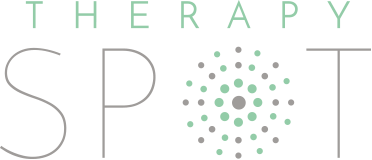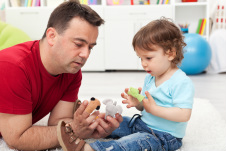As a parent, and particularly a working parent, I often worried about the amount of interaction that I had with my children when they were preschoolers, and whether it was enough to promote language development. The average child’s vocabulary when he/she starts school is roughly 5000 words (1). As a Speech-Language Pathologist, I can put your mind at ease and tell you that the research points to the fact that children learn language through play and other everyday events. Here are 3 communication strategies to use with your child that can help to increase their language development
1. Let your child lead the communication (i.e., TALK LESS). Observe, Wait and Listen (OWL)
- Observing: Pay close attention to the child so you can see exactly what he/she is interested in or what he or she is trying to tell you.
- Wait: Waiting is a powerful tool because it gives the child an opportunity to initiate.
- Listen: Pay close attention to what the child is saying so that you can respond appropriately.
2. Follow the Child’s Lead.
- Be face to face.
- Imitating the child’s actions, sounds, facial expressions or words.
- When the child communicates – respond immediately by (imitating the sound, expanding on the phrase, adding to the comment etc.) and stay with the child’s interest.
- Join in and play – too much direction usually means less interaction. When you join in and play, the interaction takes off!
- Take The Focus Off Getting The Child to Talk – no pressure = more talking from child.
3. Comment on what the child is doing and ask sincere questions that show your interest.
- Do not ask questions that make the child feel as though they are being tested (e.g., if he/she is looking at the ball, do not say “what is this?”)
Instead:
- Acknowledge and Restate –repeat the child’s utterance
- Affirm and Elaborate –expand on what the child has said by:
– Adding information – The child says, “pig.” Then the you say, “That’s right, there’s a little pig.”
-Providing words for the child’s nonverbal response – The child points to the pig. Then the you say, “yes, that’s the pig.”
- Negate and Clarify-Correcting inaccurate information in the child’s response – The child says, “pig,” Then you say, “No, that’s not a pig. Pigs have round snouts and curly tails. This is a sheep. It has a short fluffy tail.”
- Request Clarification – You negate and clarify (see above), then asks child to imitate the correct response – The child says, “Pig.” You says, “No it’s not a pig, it’s a sheep. Say, sheep.”
- Dickinson, D. K., Griffith, J. A., Michnick Golinkoff, R., & Hirsh-Pasek, K. (2012). How Reading Books Fosters Language Development around the World. Child Development Research, vol. 2012. Available online at: http://www.hindawi.com/journals/cdr/2012/602807/cta/.



